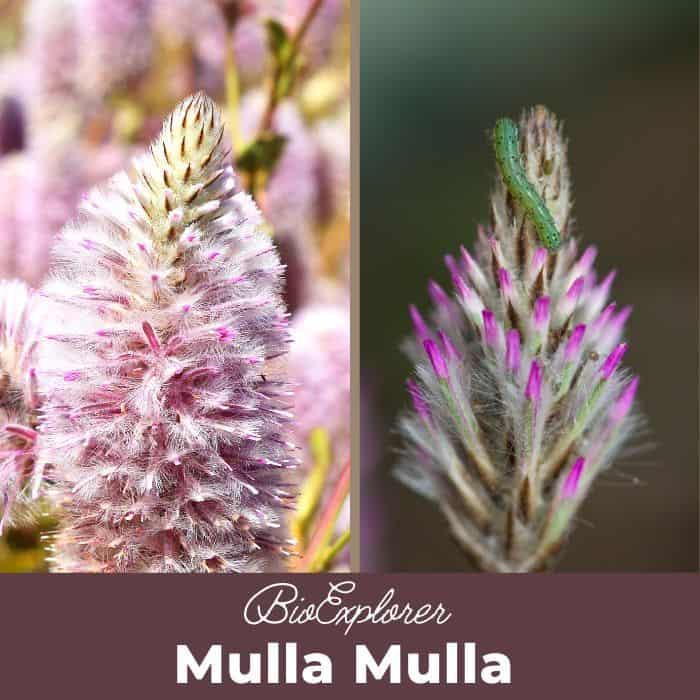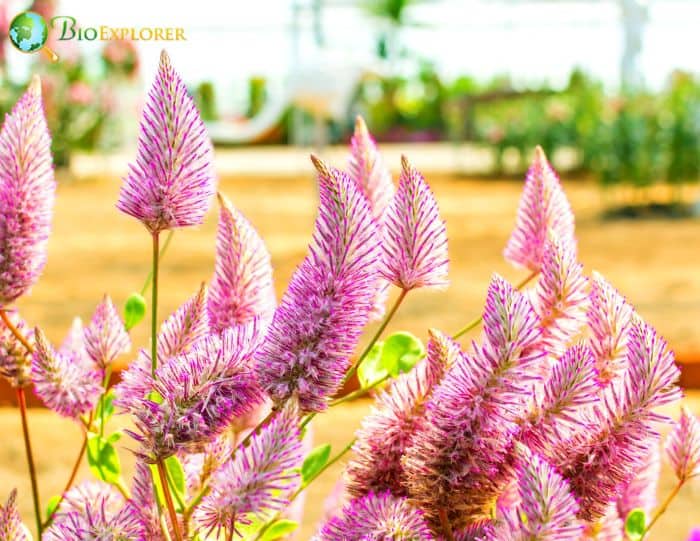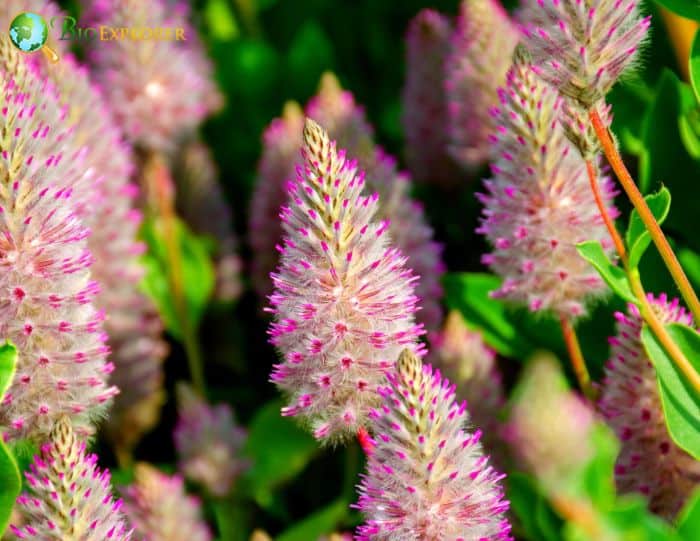
- Plant Type: Annual herb.
- Common Names: Mulla Mulla, Lamb’s Tail, Pink Pussy Tails, Tall Mulla Mulla.
- Color: Pink to Purple.
- Flower Dimensions: The spikes can be up to 5.9 inches long. The outer tepals are 0.83 to 1.1 inches long. The inner tepals are 0.77 to 0.96 inches long.
- Flowering Season: July to December.

Ptilotus exaltatus is an annual herb endemic to Australia. This plant is a member of the order Caryophyllales.

- Mulla Mulla is an erect plant that can grow to a height of around 1.2 meters.
- The leaves of the Mulla Mulla are leathery light green to blue-green. Occasionally, it has reddish tones. The cauline leaves are alternate.
- The spikes are solitary, ovoid, or cylindrical. So it is with densely arranged flowers. Therefore, the flowers of the Mulla Mulla resemble bottlebrushes.
- The blossom of Mulla Mulla starts silver. Then, at maturity, it turns neon pink near the tips.
- The P. exaltatus species thrives in full sun with rich, sharply-drained soil. In addition, they are heat and drought-tolerant plants.
Where can Mulla Mulla be mostly spotted?
Interesting Facts about Mulla Mulla

- Ptilotus[1] has about 100 species. All of the species, except 1, are endemic to Australia. For example, the beautiful colored flowered P. exaltatus is native to Australia.
- Ptilotus[2] comes from the Greek word “Ptilotos” which means winged, soft-winged, whether membranous or feathered.
- The specific epithet exaltatus is from the Latin word, which means raised up or tall. This refers to the spikes of the flower.
- Ptilotus exaltatus can thrive in an environment of high phosphorous without suffering from phosphorous toxicity. According to a study[3], the Mulla Mulla plant can accumulate phosphorous and calcium in its different cells in the leaves.
- Ptilotus exaltatus and Ptilotus nobilis share many morphological characteristics. However, they are only classified as different species based on the inflorescence color. One study[4] suggested that P. exaltatus and P. nobilis are conspecific (of the same species) since the ITS sequence data show little genetic divergence or structure. There is a lack of reliable morphological characteristics that separate the 2 species.
Suggested Reading: Different Flowering Plants
Cite This Page
APA7MLA8Chicago
BioExplorer.net. (2025, December 17). Mulla Mulla. Bio Explorer. https://www.bioexplorer.net/plants/flowers/mulla-mulla/.
BioExplorer.net. "Mulla Mulla" Bio Explorer, 17 December 2025, https://www.bioexplorer.net/plants/flowers/mulla-mulla/.
BioExplorer.net. "Mulla Mulla" Bio Explorer, December 17 2025. https://www.bioexplorer.net/plants/flowers/mulla-mulla/.











